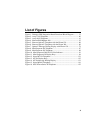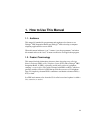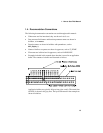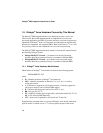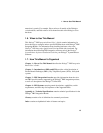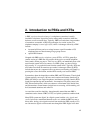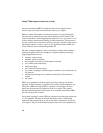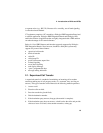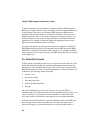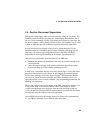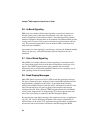
2. Introduction to PBXs and KTSs
A PBX, or private branch exchange, is a telephone system that is usually
installed in a business. It provides service among many extensions within the
business as well as outside lines. Typically, PBXs are used when a large number
of extensions are needed. A PBX can be thought of as a mini version of a
telephone company's central office (CO) switch. Advantages offered by a PBX
include:
• increased efficiency and cost savings because a specific number of CO
telephone lines are shared among a large group of users
• special PBX features
Grouped with PBXs are key telephone systems (KTSs). A KTS is generally a
smaller version of a PBX that also provides direct access to outside telephone
lines (trunks). When you press a "line" key on a KTS you immediately hear a dial
tone from the central office. In contrast, on a PBX system, you have to dial a
digit, usually "9", to get the dial tone from the central office. Typically, KTSs are
used when fewer than 50 extensions are needed. Advantages offered by KTSs
include that anyone in a supported office can answer an incoming call simply by
pressing the correct line button, and that KTSs usually cost less than PBXs.
Systems have been developed that combine PBX and KTS features. These hybrid
systems typically serve up to 100 users and contain some features found only in
PBXs (the ability to use single line phones) and features typically found in KTSs
(hands free announcing and answerback). An example of a hybrid system is the
NEC Electra Professional, which can connect to a maximum of 64 outside lines
and 96 extensions. Some features include least cost routing, call forwarding, call
hold, automated attendant, and caller ID.
As noted above and for simplicity, throughout this manual the term PBX is
sometimes used to denote a PBX, a KTS, or a hybrid system that combines both.
Many PBX systems are digital. In a digital system, both the voice signals and
control information transmitted between station sets within the PBX are sent as
binary data. Analog voice signals received from outside the PBX (usually a CO)
are converted to digital voice data and sent through the PBX. Digital voice data
17



